Indiana's Last Frontier
Hoosier National Forest
There aren't many wild places left in Indiana.
The Hoosier National Forest represents the best of them.
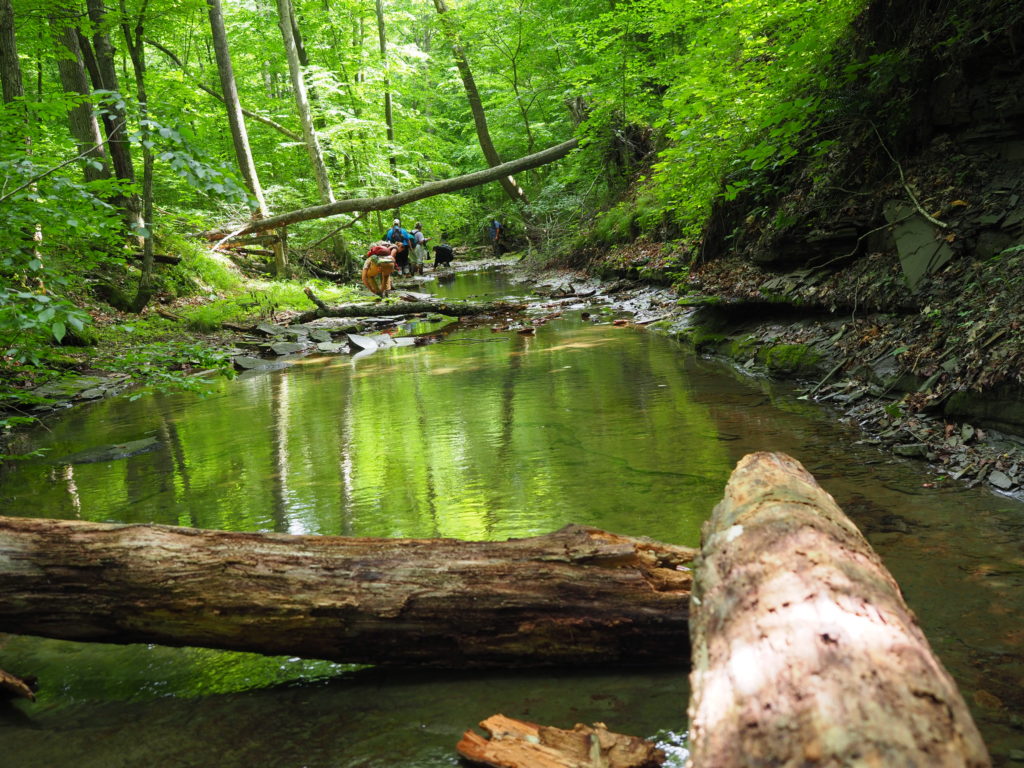
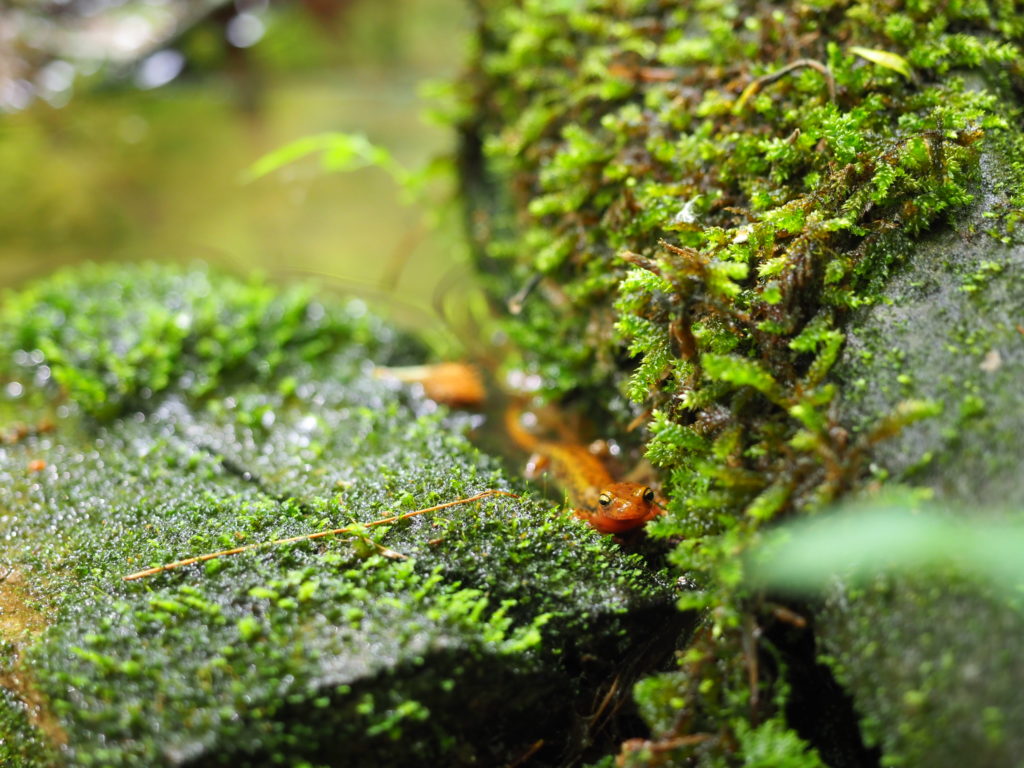
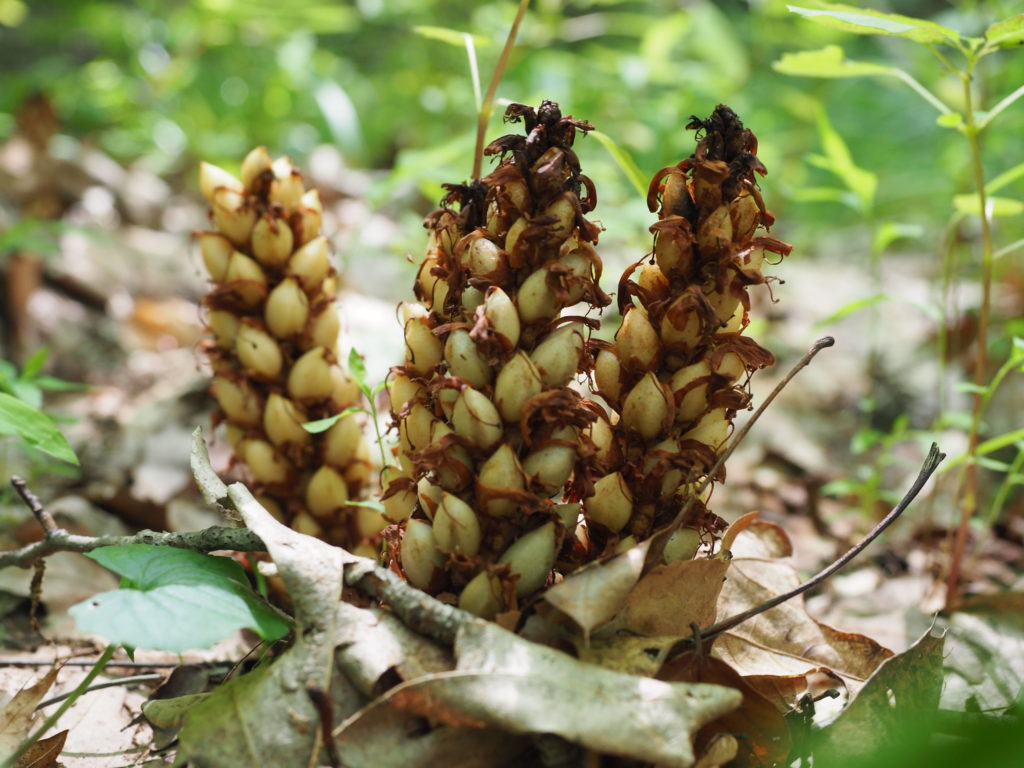
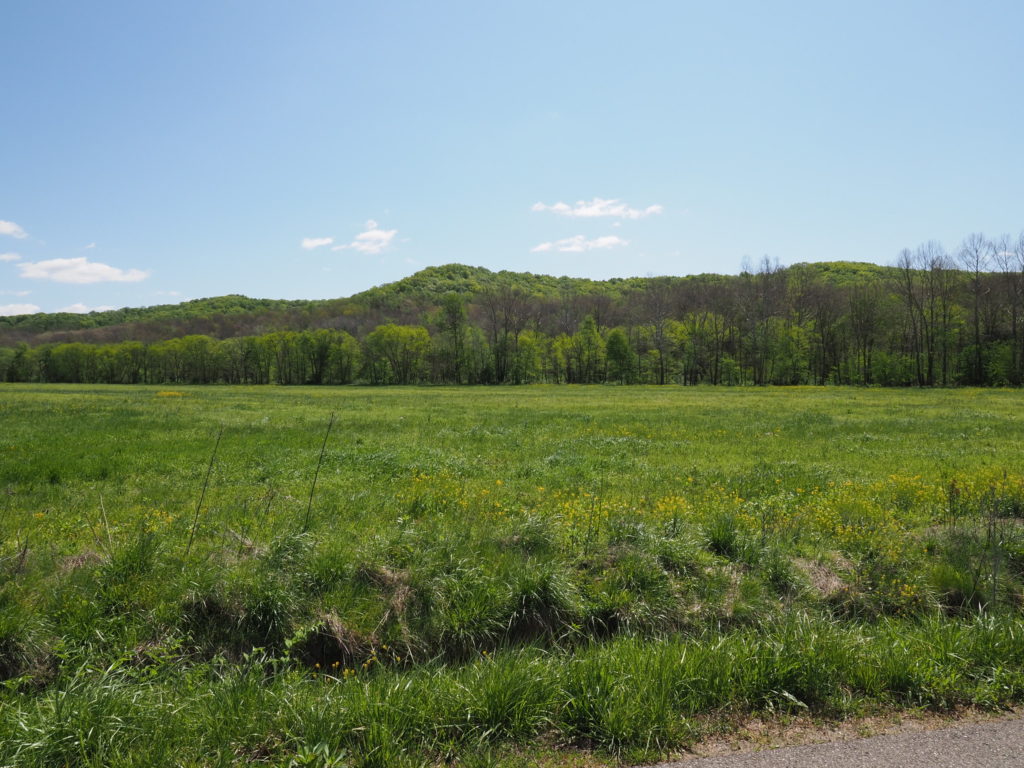
A message from Indiana Forest Alliance Executive Director Jeff Stant
Indiana’s only national forest, the Hoosier National Forest (HNF), is a remnant of what was once the largest temperate deciduous hardwood forest on the planet. The biodiversity that exists here dwarfs that of other forests in North America. The HNF’s mature and lush ecosystem attracts nearly 300,000 visitors annually and supports some of Indiana’s most rare and endangered wildlife. Today, this is all at risk due to unprecedented threats.
Although it has been over a century since Indiana hit its astonishing all-time-low of forest acreage–around 1.5 million acres compared to its historical 20 million–there is still very little forest in Indiana that has returned to the old-growth condition due to excessive logging. Most of the public forest managed by the state is subjected to policies that include logging, clearing, or burning. The largest areas of forest that are returning to natural old-growth conditions are federally managed and operating on incomplete information and an outdated plan.
The HNF is the largest contiguous forest in the state. It is a haven for rich native biodiversity. Especially sensitive species, such as the endangered Cerulean Warbler, require deep forest habitat to reproduce. As part of IFA’s Ecoblitz project, we are surveying the Nebo Ridge and Combs Creek areas of the HNF, documenting not just the presence of rare, threatened, and endangered species, but finding key indicators that these species are thriving in the unbroken, mature forests of the HNF. These include a maternity roost for the Northern Long-Eared Bat which is proposed to be federally endangered and even more rare than the Indiana bat. We have found multiple dens for state endangered Timber Rattlesnakes. We have identified nesting territories for the state endangered Cerulean Warblers, up to 23 territories per square mile in some areas!
Unprecedented threats and an outdated plan
America’s National Forests are managed by the U.S. Forest Service under the USDA through the creation of “Land and Resource Management Plans.” By law, the Forest Service is required to update the management plan for the Hoosier National Forest at least once every fifteen years so that management of the forest is informed by the latest science and information available. This also allows the opportunity for citizen participation. The HNF management plan update is almost two years overdue. So it has not incorporated important information such as the massive attack on ash trees by the emerald ash borer, plummeting bat populations, or even climate change.
Furthermore, decisions are being made that permanently affect the forest ecosystem without even understanding what lives there. There has never been a comprehensive biological survey done in the HNF. Indiana Forest Alliance is working hard to perform these surveys to document and inform decisions. Our inventories have identified tremendous diversity in plants and animals, including invertebrate species that have never been recorded in the state. In addition, we will conduct the necessary studies on bat roosting in summer and winter habitats so that future plans for the HNF account for these rare and endangered species’ survival.
Flyover of the proposed clear-cut area of Buffalo Springs.
The HNF Management Plan is grossly outdated, not accounting for the critical issues affecting the forest today.
Under the current outdated management plan, the Forest Service proposed the largest and most destructive project in the Forest’s 87-year history in an area of the HNF that the agency calls “Buffalo Springs.”
Over the next ten years, the Buffalo Springs project proposes:
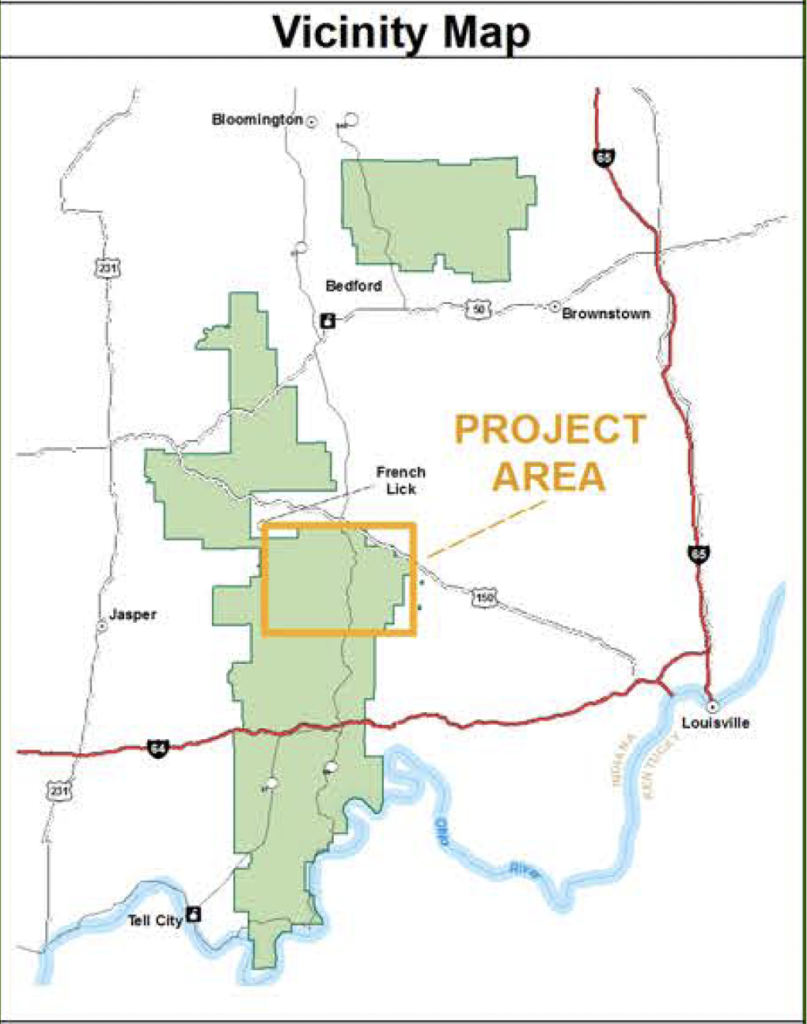
Logging 5,124 acres
This is more than half the national forest acres in the Buffalo Springs area.
Nearly 15,100 acres of public land to be BURNED several times
Some private acres will also be targeted for burning.
771 acres of chemical treatment with herbicides or pesticides
19 additional miles of road in the HNF
In addition to the creation or re-creation of 19 miles of roads into the HNF, there project will create hundreds of miles of skidder trails and fire lanes to accommodate the logging and burning.
5124 Football Fields
equals the area of forest slated for LOGGING.
329 Statues of Liberty
equals the length of 19 miles of roads
to be constructed through the HNF.
All this as the clock ticks to solve the climate crisis and species are going extinct faster than ever before…
IFA Co-Founder Andy Mahler on the History of the HNF

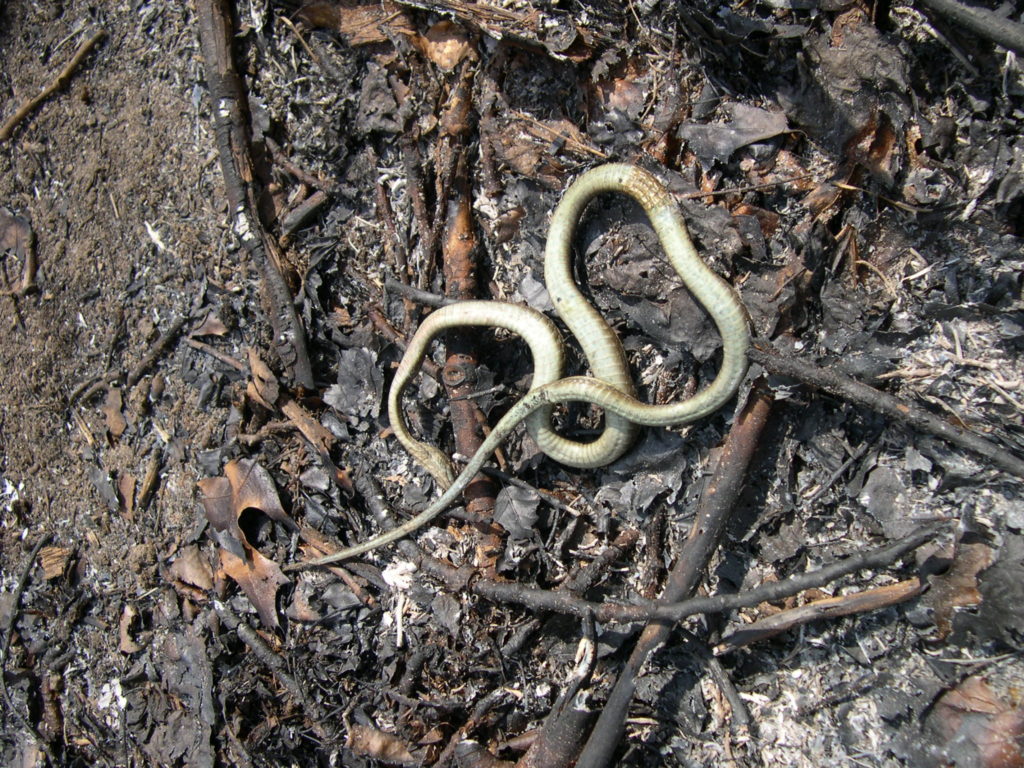
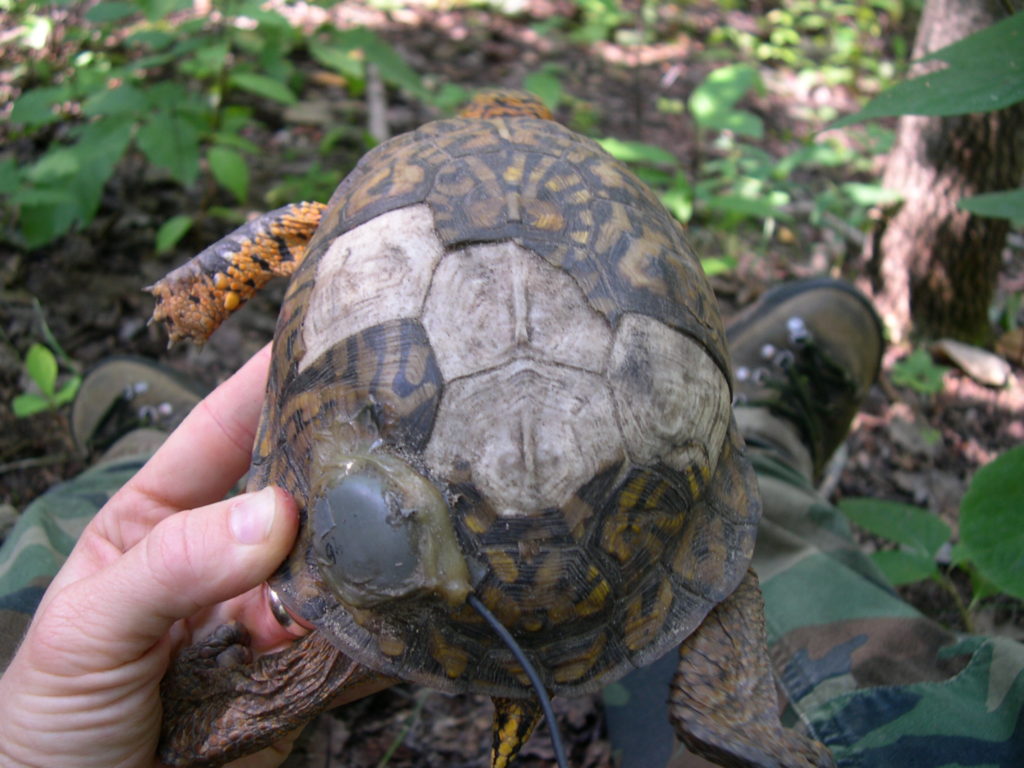
Aren’t prescribed burns a good thing?
Indiana is among the least fire-prone areas in the country, and does not face the same wildfire risk associated with the forests of California, Colorado, and other areas of the western U.S. that are often brought up in conversations about fire in forest management.
In fact, one of the defining characteristics of the eastern hardwoods that make up Indiana’s forests is the wetness of the forest ecosystem. While drought-stricken western forests are facing increased wildfire risks due to the impacts of climate change, Indiana’s forests are naturally protected against wildfires by being too wet to burn. Fires that start in Indiana’s forests are unable to grow into the huge aggressive fires you see in the west because there is too much water in the soil, plants, and wood for the fire to really get going.
As climate change progresses, scientific models predict Indiana will get hotter and wetter. And when Indiana experiences “dry days” thanks to climate change, the natural wetness of our forests protects us from aggressive dangerous forest fires.
An overly-aggressive use of prescribed burns in Indiana can dry our forests out and reduce their natural protection against forest fire. For the same reason that you don’t treat both a broken leg and a heart attack with plaster, the treatment regime prescribed for forests in other areas of America is not very applicable to the forests of Indiana.
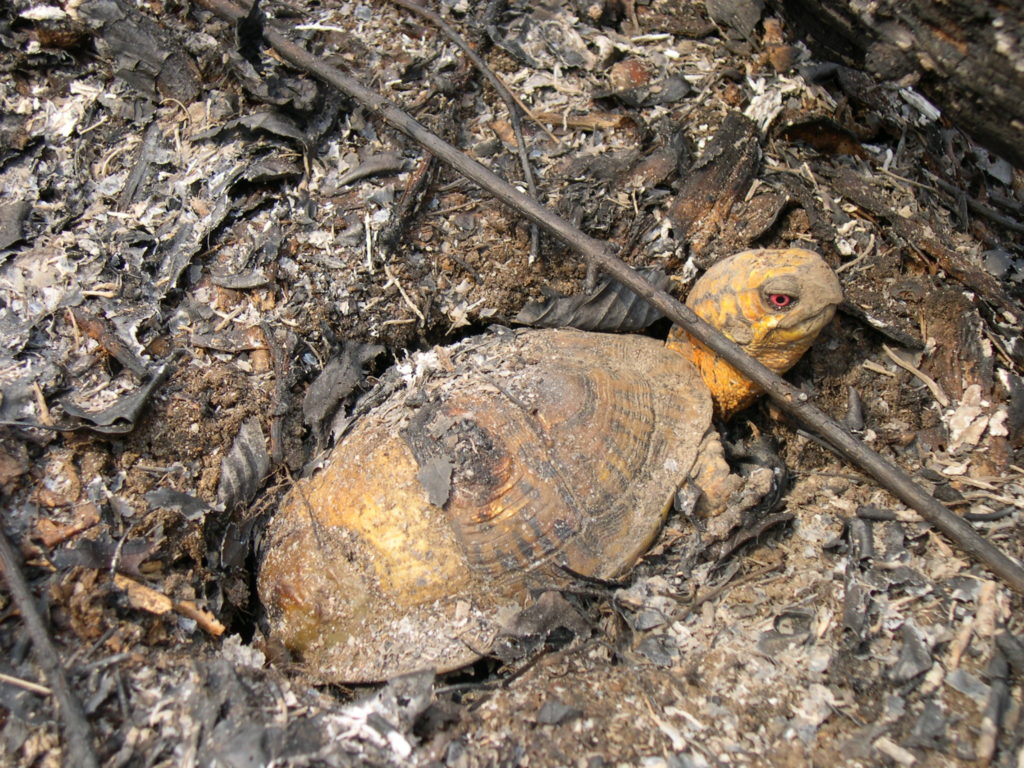

Animals that are unable to flee the flames suffer from burns and are even killed.
MAP: Indiana is among the areas with the lowest wildfire risk in the country. Map courtesy of the New York Times.
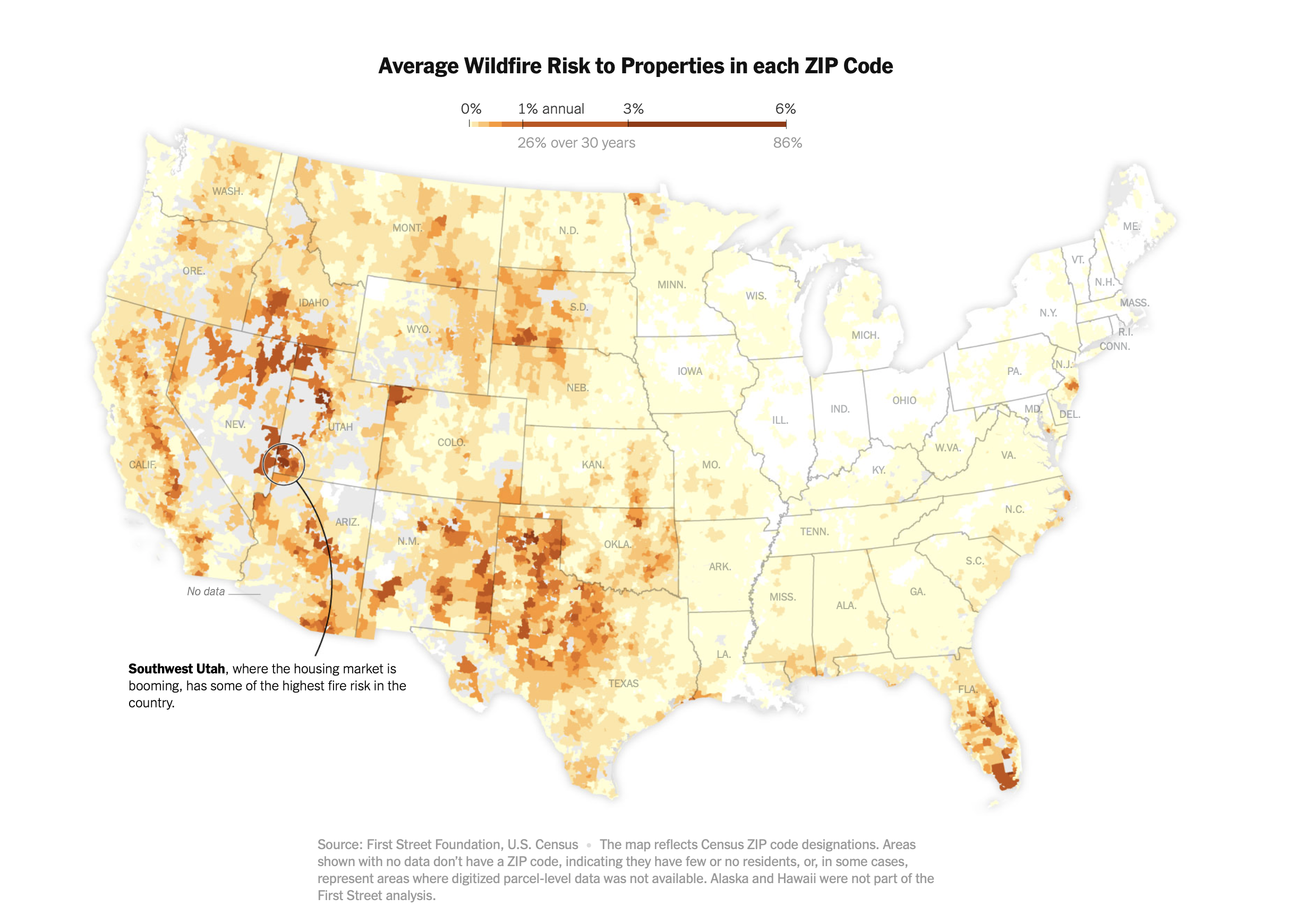
Speaking of Water...
The first line of defense from environmental hazards is nature. Here in Indiana, that means forests. Our forests are key to supporting the biodiversity that prevents dangerous diseases, improves air quality, sequesters carbon emissions, and more. Another benefit of healthy forests is the protection of our water.
Forests play a crucial role in filtering pollutants out of water before it makes it into our taps. Hundreds of thousands of Hoosiers depend on water that comes from watersheds within the Hoosier National Forest. In fact, the Buffalo Springs project is being proposed on steep, highly erodible slopes in the HNF that drain to streams running into Patoka Reservoir, a water supply for 150,000 people. What the Forest Service proposes for Buffalo Springs would dump many tons of sediment into the drinking water of hundreds of thousands of Indiana residents.
This is not the first time a Forest Service project in the HNF has threatened public drinking water. In 2020, Indiana Forest Alliance sued the U.S. Forest Service in a joint lawsuit with Monroe County and Hoosier Environmental Council over its aggressive logging and burning plan in the Houston South area of the HNF. We were awarded a partial victory earlier this year, with the Federal District Court ruling in our favor that the Forest Service failed to address the impacts of the Houston South project to Monroe Reservoir, the drinking water supply for 130,000 people. This stopped the project from proceeding.
When nearly 300,000 Hoosiers depend on the Monroe and Patoka Reservoirs, we cannot sit on the sidelines. The Forest Service has appealed the judge’s ruling and we are defending it to the Seventh Circuit Court of Appeals to ensure that management of the HNF will protect the largest public drinking water supplies in southern Indiana. Accordingly, if we need to sue the U.S. Forest Service again over their management plan for Buffalo Springs, we will.
A Pork Barrel Highway

MAP: Red lines indicate the zone of destruction for the proposed Mid-States Corridor Highway. The Gantz Woods Nature Preserve property border is shown in yellow. Gantz Woods would be destroyed by the construction of the new terrain highway. U.S. 231 is shown running parallel to the east of the Mid-States Corridor Highway.
Along the western boundary of the HNF, special interests are pushing for the construction of an invasive new terrain highway that would rip through thousands of acres of farmland, forests, wetlands, and even a nature preserve. The project known as the Mid-States Corridor Highway would run parallel to U.S. 231, just 20 miles away from the newly constructed I-69. While the state is already spending $75 million to upgrade U.S. 231, proponents for the Mid-States Corridor Highway are pushing for nearly a billion taxpayer dollars to be spent on yet another unnecessary highway that will fracture Hoosier communities and nature.
In response to the highway proposal, grassroots citizen coalitions are calling for a “no new terrain alternative,” which pushes for infrastructure dollars to go toward upgrading existing roads, including U.S. 231, rather than building another highway that taxpayers will be paying additional dollars to maintain indefinitely, while existing roads continue to crumble.
Adding another major, high-speed road in southern Indiana, especially in such close proximity to the lush biodiversity of the HNF, will create a wildlife deathtrap. Animals trying to migrate from one section of forest to another will not only have to cross the existing U.S. 231, but also cross a second larger expressway. According to a Draft Environmental Impact Statement, the route proposed by the state will fracture forest closer to more threatened and endangered species than any other route being studied for the highway. In addition, erosion from the highway’s multiple crossings of streams will also threaten the last breeding population of native lake sturgeon in the Ohio River Basin which survives in the East Fork of the White River within the HNF.
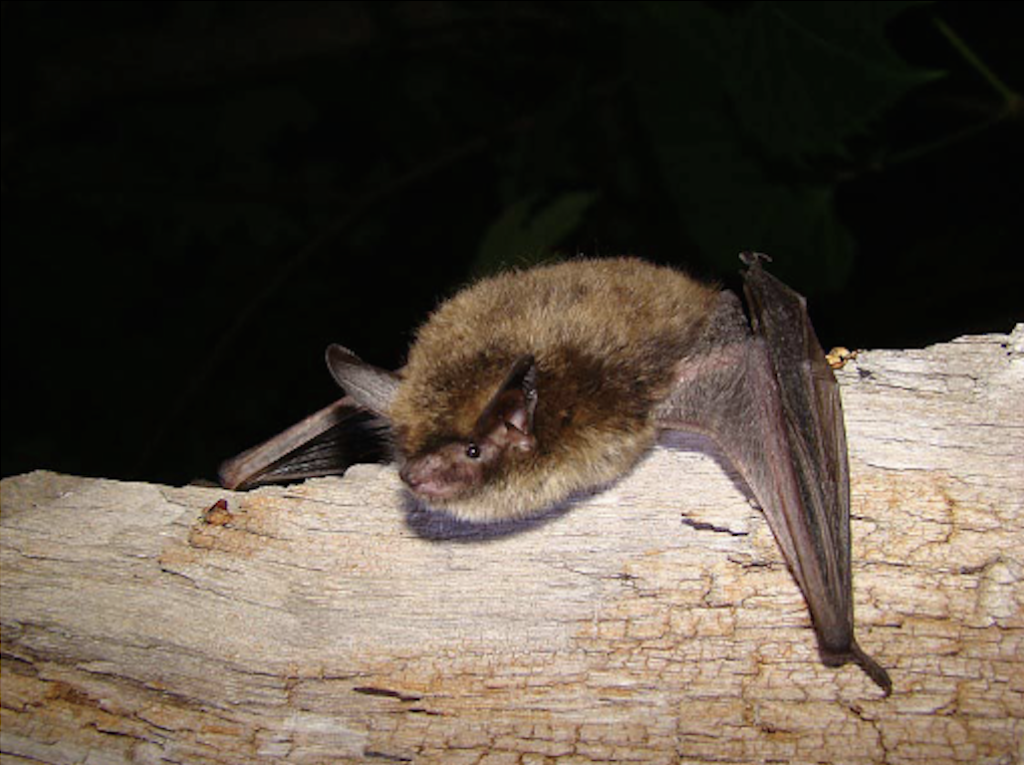
Above: Northern Long-Eared Bat by Adam Mann. Below: Cerulean Warbler by Patricia Rettig.
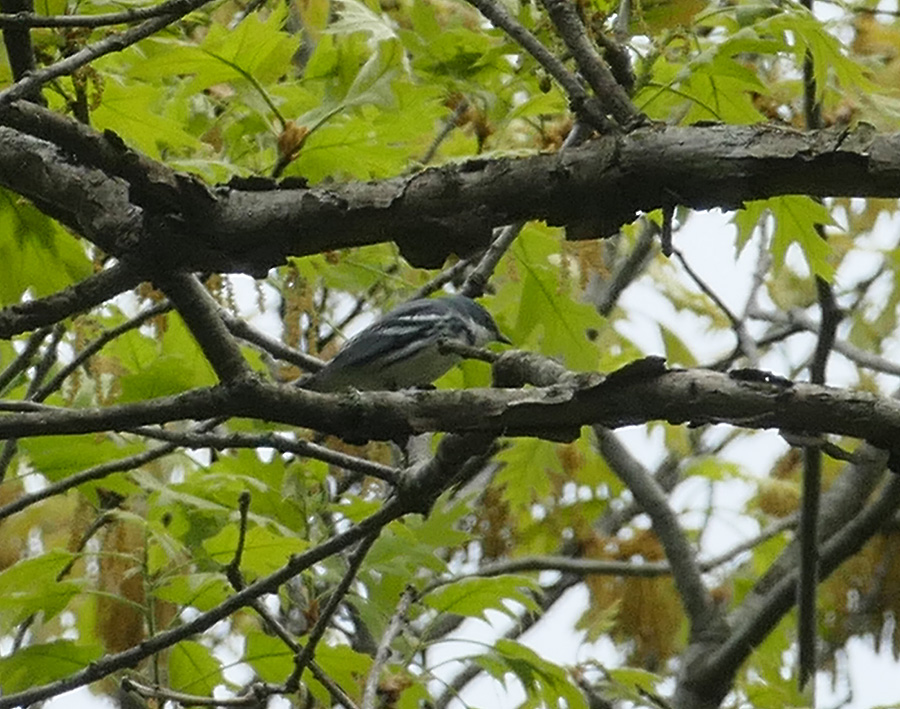
Endangered Species of the HNF
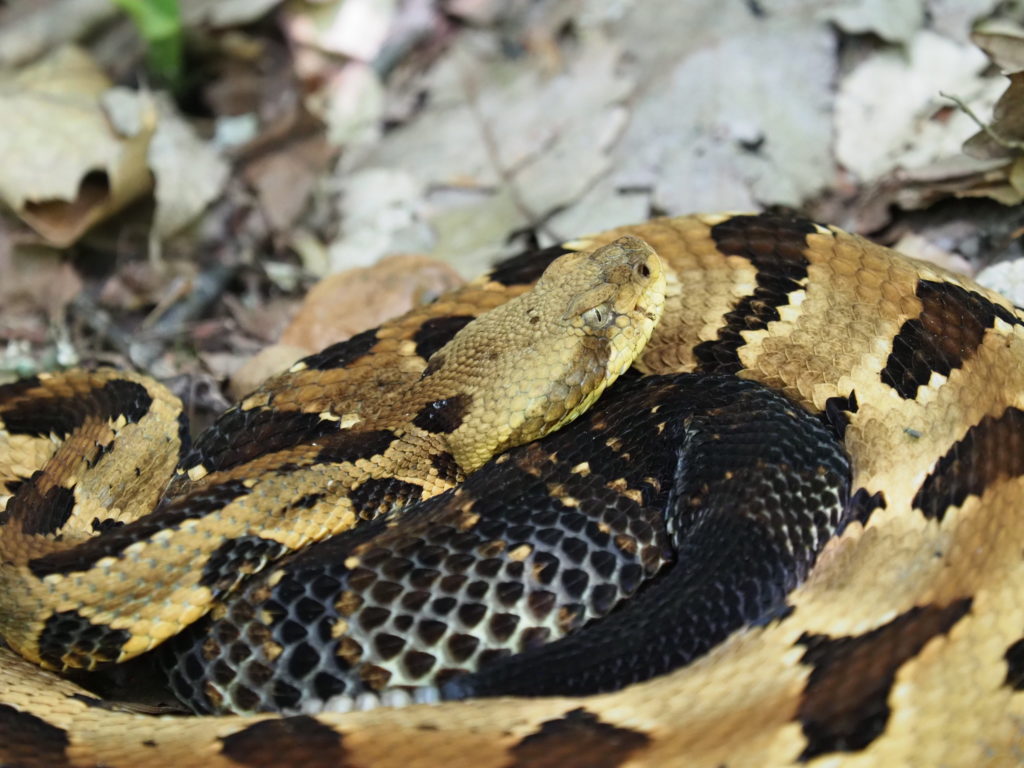
Above: Timber Rattlesnake. Below: Black-and-white Warbler by Patricia Rettig.
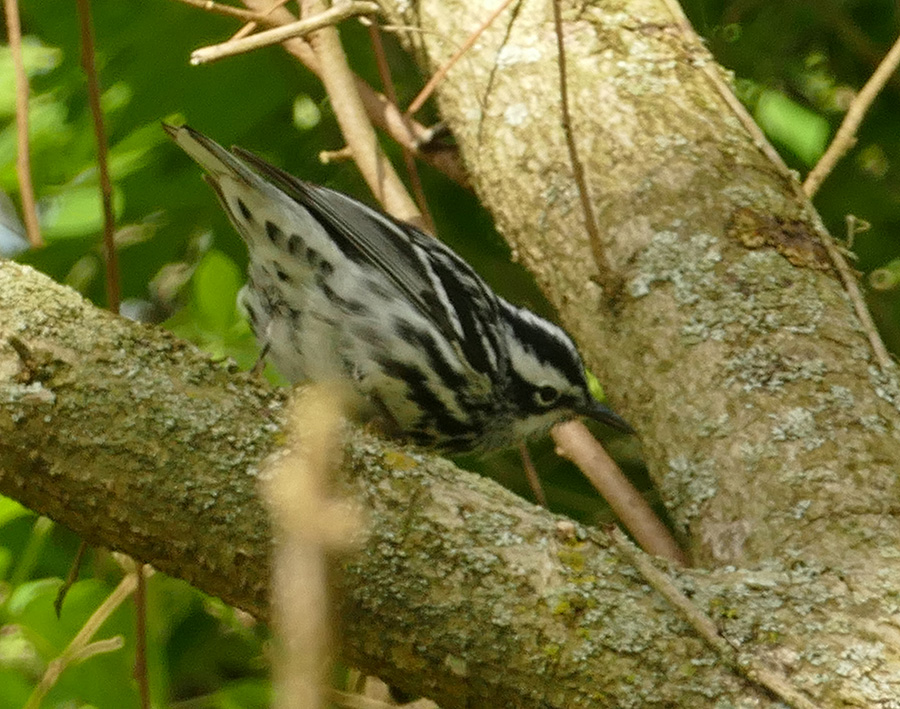
If the Mid-States Corridor highway proceeds according to the state’s plan, we will lose precious Indiana forest habitat forever. That highway will bring nearly unstoppable urban sprawl, a concrete jungle at the expense of Indiana’s natural heritage and future generations.
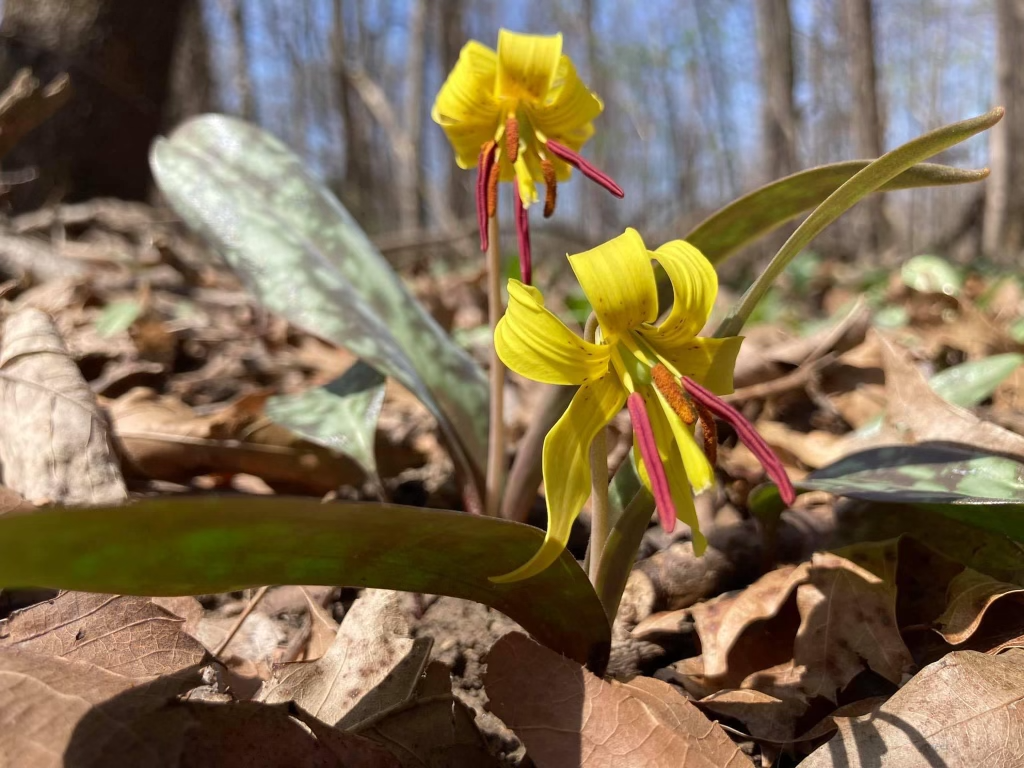
The HNF supports vibrant wildflowers like this trout lily.
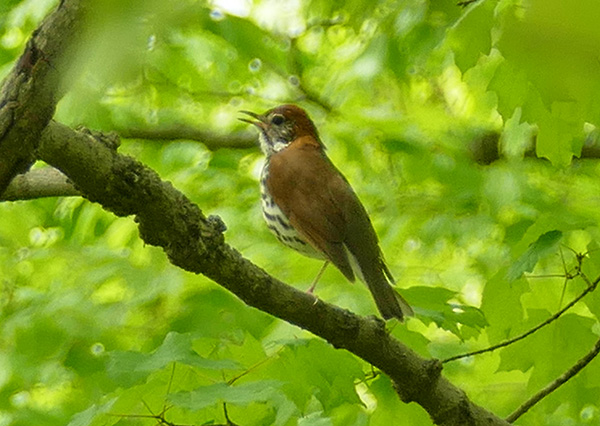
Forest birds depend on healthy, unbroken forests. Photo of wood thrush courtesy of Patricia Rettig.
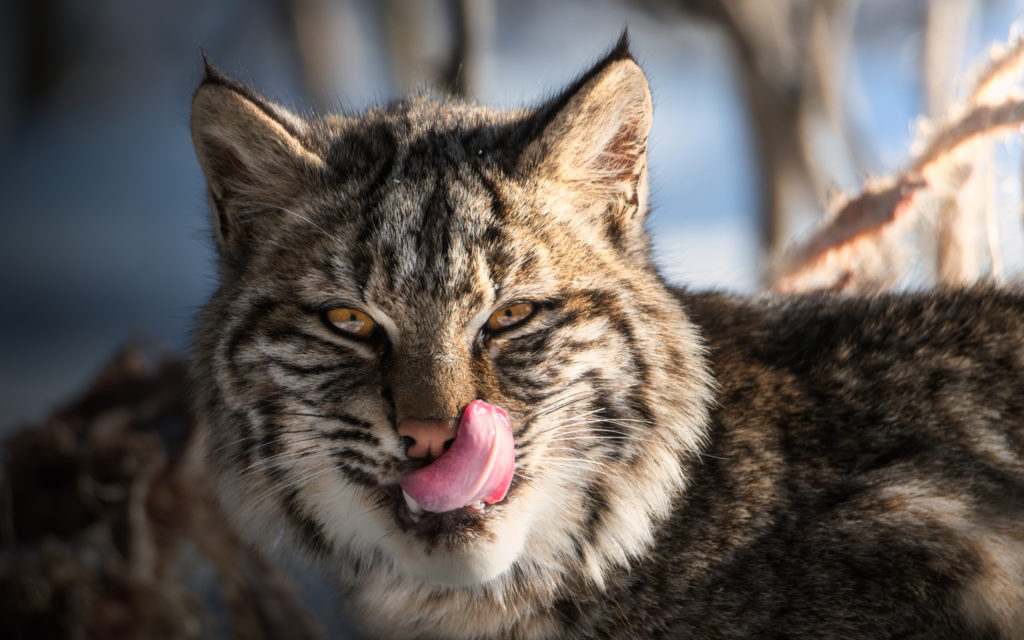
Animals like this bobcat will perish trying to cross the Mid-States Corridor Highway.
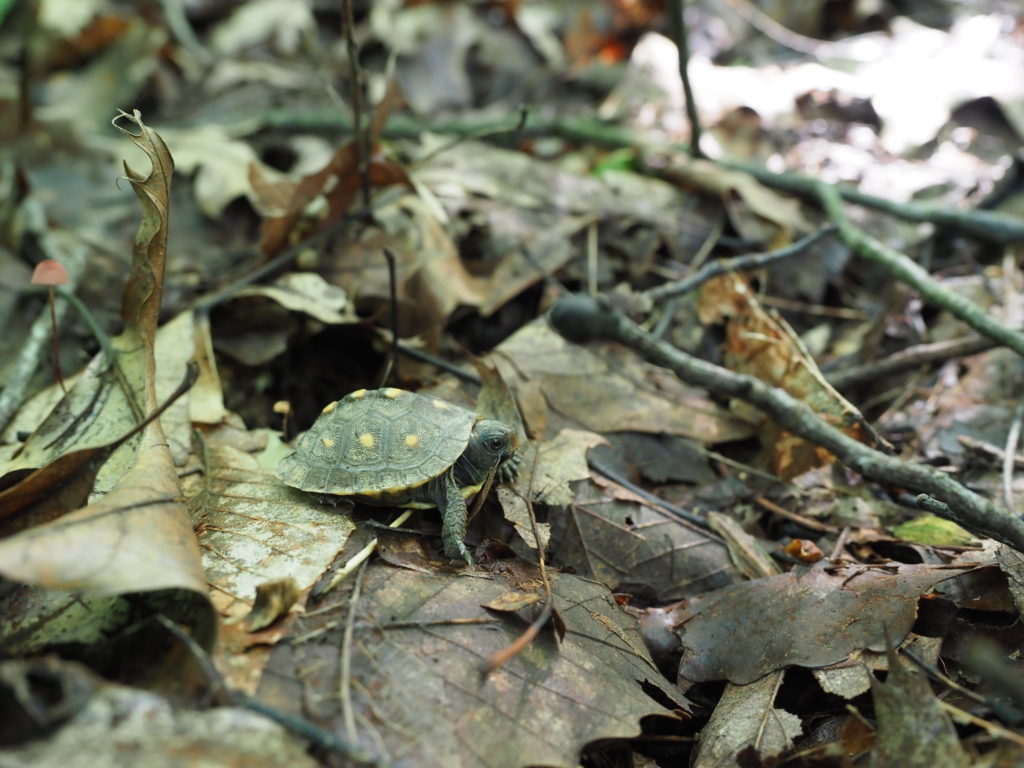
Slow-moving creatures like this turtle struggle to flee from prescribed burns and often die in the blaze.
Fighting for the
Hoosier National Forest
Indiana Forest Alliance began its history a quarter-century ago as a group of citizen advocates speaking up for the Hoosier National Forest. Thanks to the generous support from people like you, we are still in the fight. Today, we need your help more than ever.
Please help defend Indiana’s largest frontier of wilderness by contributing to the legal defense of the Hoosier National Forest today. This will enable us to continue the fight against destructive projects that threaten the HNF and the people and wildlife that depend on it.
Between now and August 31st, your gift will be matched dollar-for-dollar up to $85,000 by a generous group of donors. Your support will help us unlock the full $85,000 match and raise a much needed $170,000 for the defense of the HNF! So please give as much as you can.
Thank you!
Want to do more?
Make your gift monthly recurring! You can support forest defense all year long by becoming a monthly supporter of Indiana Forest Alliance. Monthly gifts help sustain our organization’s ability to respond to urgent forest threats by providing a reliable stream of income throughout the year. Monthly gifts count toward your annual membership dues, so you can become a member of Indiana Forest Alliance with a gift of less than $5 per month!
Write to your public officials. Voice your concern for the future of the Hoosier National Forest. Tell them why you care about this forest and what you want to see done (or not done) on our public lands. Taking the time to formally reach out to public officials goes a long way in protecting public lands.
Submit public comments during comment periods on land management and development projects. Take advantage of the opportunities to participate in management and development decisions when they come. Whether it be submitting a public comment online, attending a public hearing or town hall, or reaching out to our public officials by phone, email or written letter, public participation during open comment periods is extremely important for grassroots advocacy to be successful.
Contact your public officials
Contact Senator Mike Braun online.
Phone:
Contact Senator Todd Young online.
Phone:
Mail: (district office addresses vary).
Find your U.S. Representative.
Contact Governor Holcomb
Email: govholcomb@gov.in.gov
Phone: (317) 232-4567
Mail:
Office of the Governor
Statehouse
Indianapolis, Indiana 46204-2797
Find Your State Legislators.
